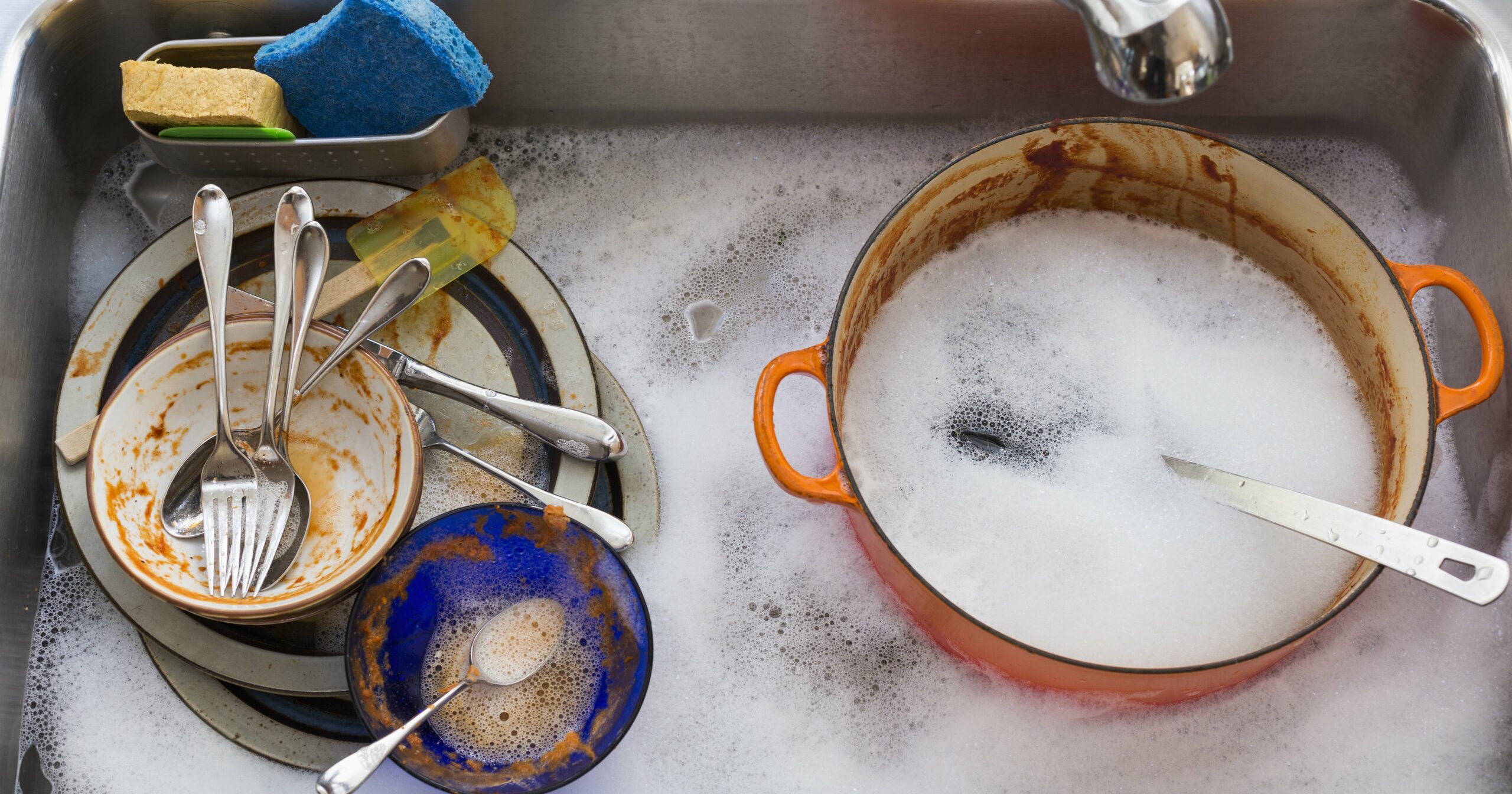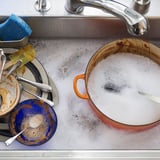Call them sleuths or just highly observant people, but TikTok users have a beautiful ability to identify unique trends or unordinary behaviors. Most recently, users are spiraling after someone “discovered” that British wash their dishes differently. Sure, we all have our cleaning preferences, but this one warrants a sanitary double-take.
Supposedly, British people fill up a washing basin (which typically sits in the sink) with warm, soapy water and let their dishes soak. Then they use a sponge to wash said dishes and place the clean (?) dish on a drying rack. That may not seem too wild, but people are taking issue with the fact that they apparently don’t: change the water they’re using, so all the dishes get washed using the same dirty water in the washing basin, or (the bigger issue), they don’t rise off the soapy water and just let the dishes drip dry in the drying rack. . . suds included.
Of course, plenty of Brits are offended by the entire premise of this theory, with one user responding, “I have NEVER not washed off the soap suds before putting the dishes in the drying rack. Who the heck leaves the suds on??” while another replied, “Ok, I live in Britain, WHO DOESN’T WASH OFF THE SOAP????”
But in the name of science and international affairs, we asked doctors to weigh in on how bad this supposed dish-washing strategy really is – plus, the best, most hygienic ways to actually wash your dishes.
Experts Featured in This Article
Carla Garcia Carreno, MD, is an infectious disease specialist and medical director for Infection Prevention and Control at Children’s Medical Center Plano.
Amesh Adalja, MD, is an infectious disease expert and senior scholar at the Johns Hopkins Center for Health Security.
Is It Really That Gross to Not Rinse Your Dishes?
Sorry, but yes. “In general, washing dishes in water that accumulates and not rinsing with running clean water carries the risk of spreading bacteria and other infectious agents,” says Carla Garcia Carreno, MD, an infectious disease specialist and medical director for Infection Prevention and Control at Children’s Medical Center Plano.
The problem with the “washing up basin” method is that organisms – including bacteria, viruses, or parasites (such as E. Coli, Legionella, Nnorovirus, Giardia, Rotavirus, and more) – can survive (and multiply) in accumulated water if you don’t regularly refill it with fresh water, she says. The same is true if you don’t clean your sink or washing basin well between uses.
Say you place raw meat on a dish or cutting board, then soak that dish in soapy water along with other dishwear. Now everything in that water is at risk of being contaminated with any bacteria from the meat. If you then just give your dishes a quick swipe with a sponge and place it on a drying rack without ever rinsing it, you may not have removed the bacteria and when they’re used again, they could contaminate whatever else is placed on them, says Amesh Adalja, MD, an infectious disease expert and senior scholar at the Johns Hopkins Center for Health Security.
None of this means this dish washing method will definitely get you sick, but anyone who opts to keep the suds on post-soak or doesn’t change the water used to wash the dishes should reconsider their method – wherever they live.
How to Properly Wash Your Dishes
If you have an automatic dishwasher, that’s great! Use it. And if you have a dishwasher with a sterilization cycle, that’s even better since it thoroughly cleans and disinfects your kitchenware, Dr. Carreno says.
However, don’t sweat it if a dishwasher isn’t accessible. The best, most hygienic method to wash your dishes includes the following steps, according to Dr. Carreno:
- Rinse your dishes from visible left-over food.
- Using a sponge, soap or detergent, and warm, running water, scrub the dishes clean. (You can get the dish and your sponge wet, turn off the water while you scrub off debris, then turn it back on for a final scrub to save water.)
- Completely rinse off the soap with running warm water and let air dry.
- Regularly replace any sponges or brushes used to wash the dishes every two weeks.
Keeping your kitchen sink clean is also a must, since splashed water from contaminated surfaces can carry infectious agents, and any food you put down the garbage disposal can promote bacterial growth and biofilm (slime) formation, Dr. Carreno says. To keep things under control, she recommends cleaning your sink and sink drain with running hot water and bleach or chlorine (one tablespoon or 15 ml in four liters of water) every one to two weeks.
Andi Breitowich is a Chicago-based freelance writer and graduate from Emory University and Northwestern University’s Medill School of Journalism. Her work has appeared in PS, Women’s Health, Cosmopolitan, and elsewhere.




